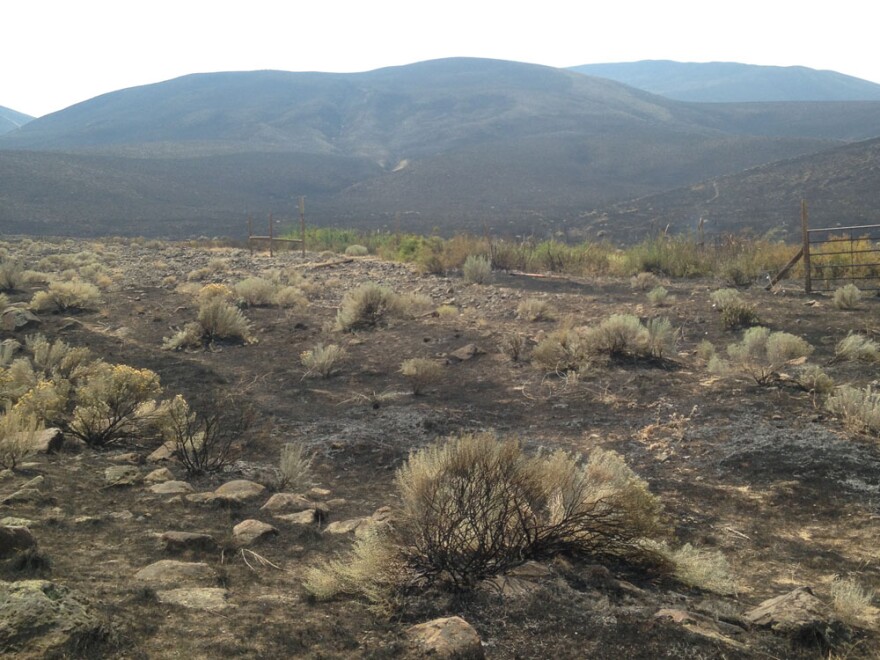The Range 12 Fire in southeast Washington has destroyed some of the most sensitive shrub steppe habitat in the nation.
Heidi Newsome is a wildlife biologist in the sand and sagebrush on the Hanford Reach National Monument. This is the third massive fire in just 16 years on this federally protected landscape she manages.

“So it really becomes a challenge to do good wildlife management when you are having fires this frequently,” Newsome said.
Walking through the charred remains of the Range 12 Fire is grim she said, like a burnt-down house. Bugs and birds flying from flames, mother elk calling for their calves and voles coming up to discover a moonscape of char and ash.
Newsome said plants like sagebrush need much longer than 10 years to become mature enough for nesting, food, shade and cover. Many sage-dwelling species have little other place to go in the West.
After the fire, federal land managers will work to help lessen flowing mud, blowing sand and the spread of invasive species like cheatgrass and tumbleweed on the Hanford National Reach.
The Range 12 Fire has grown to more than 177,000 acres and is currently the largest wildfire on a list of active wildfires across the U.S. being managed by government agencies.



